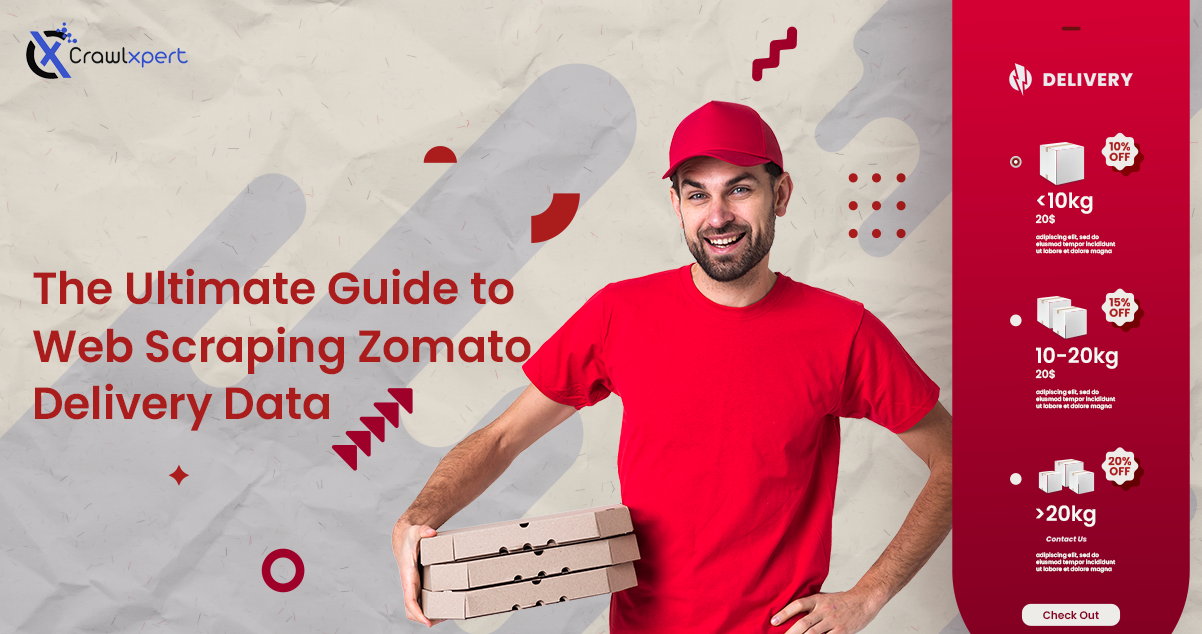
The Ultimate Guide to Web Scraping Zomato Delivery Data
2025 July 01
Introduction
In today’s competitive food delivery industry, data-driven insights are crucial for businesses to stay ahead. Web Scraping Zomato Delivery Data enables restaurants, market analysts, and companies to derive useful insights regarding customer preferences, pricing strategies, restaurant ratings, and delivery time.
In this guide, we will explore all the essentials of Zomato Data Scraping, processes to efficiently Scrape Zomato Food Delivery Data, and tools required for proper Zomato Delivery Data Harvesting.
Why Scrape Zomato Delivery Data?
- Market Research & Competitive Analysis: Analyzing Zomato Delivery Data Insights allows businesses to study market trends, restaurant performance, and competitor strategies.
- Restaurant Performance Evaluation: Zomato Delivery Data Analysis provides insights into restaurant ratings, customer reviews, and menu pricing.
- Price Monitoring & Demand Forecasting: Tracking menu prices and customer demand trends enables businesses to optimize their pricing strategies.
- Customer Sentiment & Review Analysis: Extracting reviews from Zomato helps understand customer preferences and improve food quality and service.
- Logistics & Delivery Optimization: Analyzing delivery times, peak order hours, and service efficiency helps optimize logistics operations.
Zomato Data Scraping: Legal Considerations
Before proceeding, it is imperative to legalize web scraping with respect to legal and ethical considerations.
Important Considerations:
- Follow the Zomato Robots.txt File - Always check and comply with Zomato's robots.txt requirements.
- Prevent Crashing of Zomato Servers - Rate-limit requests, so that they do not flood their servers.
- Use Data Responsibly - Make sure you use scraped data in an ethical context and within legal frameworks.
Setting Up Your Zomato Data Scraping Environment
To efficiently Scrape Zomato Food Delivery Data, you need the right tools and frameworks.
1. Programming Languages
- Python – Most popular choice due to its robust scraping libraries.
- JavaScript (Node.js) – Useful for handling dynamic web content.
2. Web Scraping Libraries
- BeautifulSoup – Extracts HTML data from static pages.
- Scrapy – A high-performance web crawling framework.
- Selenium – Scrapes JavaScript-based dynamic content.
- Puppeteer – Headless browser for handling complex pages.
3. Data Storage & Processing
- CSV/Excel – Saves extracted data for analysis.
- MySQL/PostgreSQL – Stores structured datasets.
- MongoDB – NoSQL storage for flexible data handling.
Step-by-Step Guide to Scraping Zomato Delivery Data
Step 1: Understanding Zomato’s Website Structure
Zomato’s data is dynamically loaded via AJAX, requiring network inspection in Developer Tools.
Step 2: Identify Key Data Points
- Restaurant name, location, and rating
- Menu items and pricing
- Delivery time estimates
- Customer reviews and sentiments
Step 3: Extract Data Using Python
Using BeautifulSoup for Static Data
import requests
from bs4 import BeautifulSoup
url = "https://www.zomato.com/city/restaurants"
headers = {"User-Agent": "Mozilla/5.0"}
response = requests.get(url, headers=headers)
soup = BeautifulSoup(response.text, "html.parser")
restaurants = soup.find_all("div", class_="restaurant-name")
for restaurant in restaurants:
print(restaurant.text)Using Selenium for Dynamic Content
from selenium import webdriver
from selenium.webdriver.common.by import By
from selenium.webdriver.chrome.service import Service
service = Service("path_to_chromedriver")
driver = webdriver.Chrome(service=service)
driver.get("https://www.zomato.com")
restaurants = driver.find_elements(By.CLASS_NAME, "restaurant-name")
for restaurant in restaurants:
print(restaurant.text)
driver.quit()Step 4: Handling Anti-Scraping Measures
- Use rotating proxies (ScraperAPI, BrightData).
- Implement headless browsing with Puppeteer or Selenium.
- Randomize user agents and request headers.
Step 5: Store and Analyze the Data
Convert scraped data into CSV or store it in a database for analysis.
import pandas as pd
data = {"Restaurant": ["ABC Cafe", "XYZ Bistro"], "Rating": [4.5, 4.2]}
df = pd.DataFrame(data)
df.to_csv("zomato_data.csv", index=False)Analyzing Scraped Zomato Data
1. Price Comparison & Competitive Analysis
Track menu prices across different restaurants to identify pricing strategies.
2. Customer Reviews Sentiment Analysis
Use Natural Language Processing (NLP) to analyze customer reviews.
from textblob import TextBlob
review = "The food was excellent!"
sentiment = TextBlob(review).sentiment.polarity
print("Sentiment Score:", sentiment)3. Delivery Time Optimization
Analyze delivery times to optimize logistics and improve customer experience.
Challenges & Solutions in Zomato Data Scraping
| Challenge | Solution |
|---|---|
| Dynamic Content Loading | Use Selenium or Puppeteer |
| CAPTCHA Restrictions | Use CAPTCHA-solving services |
| IP Blocking | Use rotating proxies |
| Data Structure Changes | Regularly update scraping scripts |
Ethical Considerations & Best Practices
- Follow robots.txt guidelines to respect Zomato’s policies.
- Implement rate-limiting to prevent excessive server requests.
- Avoid using data for unethical or fraudulent purposes.
- Ensure compliance with data privacy regulations (GDPR, CCPA).
Conclusion
Zomato Data Extract is a very effective way of deriving business intelligence. With the help of advanced tools, techniques, and ethical guidelines, it can also be used to efficiently scrape Zomato Food Delivery Data for data-driven decision-making, pricing optimization, and better customer experience.
If you are looking for a completely automated and reliable Zomato Delivery Data Extractor, CrawlXpert is a trusted supplier of advanced data extraction solutions.

